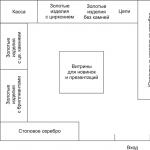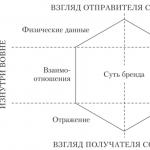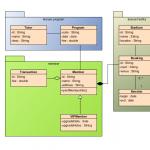Marketing products. Encyclopedia of Marketing
Product marketing is not product management. It's not growth hacking, it's not inbound marketing, it's not content marketing. Product marketing is the strategy, science, and art of bringing a product to market.
What does a product marketer do?
A product marketer is the CEO of a product, product line, or entire portfolio. Product Marketer Responsibilities:
- Act based on an unmistakable sense of the target audience.
- Know potential buyers and users.
- Collaborate with managers and developers to create products that meet the needs of the target audience.
- Set a price that potential buyers are willing to pay that matches the value of the product.
- Develop and distribute promotional materials that drive growth and close deals.
- Know everything about competitors and how to make your product and company stand out from their background.
- Find and use the right sales channels and partners to grow your business.
- Understand every stage of the buying experience associated with the company - awareness, interest, reflection, purchase, brand loyalty.
- Build relationships with customers to maintain loyalty and prevent churn, study case studies and collect materials for market research.
- Assist sales managers as a sales cycle expert.
- Interact with the sales team to build marketing strategies based on customer feedback.
- Interact with product managers and developers to measure engagement and create more personalized and relevant customer retention strategies based on their actual behavior.
- Manage cross-functional teams and deal with PR, media, product, development, finance, sales, sales operations, sales support, HR, business development and new product launch support.
- Report to company management on successes and failures.
- Notify the media, market analysts and investors about their products, engage in marketing strategies and position the company in the market.
- Use data and have a lively mind to make informed decisions that drive product improvement and business growth.
Who is a product marketer really?
- These are the children who traded and exchanged in the school cafeteria and were the first to rush to help.
- These are endlessly curious people who constantly ask questions.
- These are those who study business and business models.
- These are the fans of new technologies.
- These are people whose parents have no idea what they do for a living.
- These are the ones who want to eventually start their own company, but are still hatching their brilliant ideas.
- These are people who love to analyze and use data in their projects.
- These are scientists and artists. In the past, a product marketer was either an engineer or a philologist. Or maybe both.
- These are people who are tired of empty words and dream that concepts like “synergy” will disappear from the dictionary forever.
- They are professionals who are happy to work in a team of very smart, ambitious and fun people who are able to complete any task. They work hard and don't have time for fools.
- These are specialists who are not interested in short-term growth hacking. Of course, they work in spurts, but at the same time they are building a sustainable business.
What value do product marketers bring to a company and why are they essential to its growth?
You need to achieve as soon as possible, because you are under pressure from investors. But how do you do it without a strategy? Who needs to convince your target customers that they need your product?
The Product Marketer is a key position on your team for any task related to bringing a product to market. You'll need a product marketer before you even start building a product to assess the market and develop a product or service that actually solves (and pays for) potential customers' problems.
Here is a quote from a CB Insights report that analyzes 101 essays by founders of failed startups:
“The main reason for the failure, which is named by 42% of respondents, is the lack of market demand for their product.
It should be self-evident: if no one wants your product, your company will not succeed. However, many startups develop such products with the irrational hope that they will convince people otherwise.”
It turns out that somewhere around 40% or 30% of them fail due to a lack of understanding of the market they are entering and a product that no one needs. It is product marketers who find out the needs of the market and the willingness of the target audience to pay.
product in marketing- this is a solution offered by the company to its consumer as a means of satisfying his needs (or a carrier of value for the consumer). Those. everything that can be offered on the market for purchase, use or consumption, in order to satisfy the specific needs of potential customers.
Often mistakenly in marketing, the term "product" is equated with the term "product" - this is incorrect (see below). A product is a broader concept - it includes both the material object (goods) itself and the intangible part - for example, sales services, warranty obligations ... and even the main idea of the brand under which the product is released (see). Moreover - the term "product", as well as the full toolkit of product management (or "product management") can be used even in relation to the services themselves in the absence of tangible goods.
The definition of what is a company's product is up to the company itself. So the same product in different forms (for example, fabric in rolls or pieces) can be considered the same product or different, depending on what needs, what consumers it must satisfy. If the same product (service) in some other form is targeted at a different target audience, then most likely it will also require separate positioning and promotion for this audience - then it is advisable to treat it as a different product.
A clear definition of the company's product for the service sector is especially important, because the definition of the product determines how exactly the services should be provided and even the nature of the services themselves. For example, a product for hairdressing services can be both a created haircut and the appearance of a client after creating a new haircut for him (his feeling of being "stylish", "fashionable"), or the reaction of others to a client with a new haircut (for example, attention of the opposite sex) , or a client satisfied with polite service and pleasant environment (background music, smells, communication with staff). Any of these options can be applied in practice - it all depends on which target audience the company chooses.
Other definitions of the term "product"
In modern Russian-language marketing, there is confusion in the use of the terms "product" and "goods". This is largely due to the fact that in Russian these terms are often considered as synonyms. However, the first term is more universal, since a product is anything that can be produced and sold (consumer goods, industrial products, services, patents, etc.). It should be noted that in English, in addition to the term "product", there is a special term "goods", meaning physically tangible products. In addition, when using these terms, there is also an "aesthetic" aspect: we are used to saying "consumer goods market", "market conditions for a certain product", but the terms "banking product", "insurance product", "tourism product" sound better, than "bank goods", etc.
The relationship between the categories "product" and "goods" is analyzed quite deeply in the works of K. Marx and F. Engels. They define a product as an item that is produced for one's own consumption - i.e. has a use value. A commodity, on the other hand, is produced for exchange. At any stage of the distribution chain, its participants, including the buyer, if he is not the final consumer, buy and sell goods. And only the end consumer acquires not a commodity, but a product, that use value, value expressed in benefit, benefit, good, i.e. in the service he needs. But at the same time, the product is also a carrier of potential exchange value, a commodity. Thus, a metamorphosis, a transformation of “product – commodity – product…” can take place. Such an understanding of the term "product" can often be found in the economic literature of the Soviet period.
Also, quite often in Russian-language literature, a product is understood as the result of labor or a production process (the process of providing a service).
Another possible interpretation of the term "product" in Russian-language marketing (often used in oral speech) is food, i.e. food: edible items in the form of supplies or goods.
Product Marketing Tasks
Market-oriented production management, when planning a new product, should be provided with extensive information: 1) about markets, their constituent elements, state and development trends; 2) about competitors, their potential and development plans; 3) about consumers, their requirements for products and purchasing power.
The creation of this information, its collection, processing and intended use in the preparation of production decisions constitutes the content of product marketing. Marketing activity as an element of the product strategy aims to ensure the sustainable position of the created product in the market, taking into account the general trends of scientific and technological progress, the potential of the enterprise, the state of the market and the impact of environmental factors on the market. Product marketing studies the nature, state and dynamics of relations in the market environment between the three main market actors - the manufacturer, consumer and competitors (Fig. 2.3).
Rice. 2.3 Relationship triangle in product marketing
Product consumer It is characterized by the type of potential buyer, the composition of his needs and the pattern of purchasing behavior. It is important for the enterprise to establish the principal type of the primary buyer of the product being created. It can be a final (individual) consumer or a buyer - a manufacturer who uses the product for his own production. The buyer can be intermediaries (wholesale and retail trade, sales agencies, dealer or leasing companies, etc.), government authorities (army and navy, government, police, customs, etc.) or non-commercial organizations (organs of education, social protection, etc.). Each consumer has a specific nature of needs that differ in mass distribution, satisfaction hierarchy, temporal and seasonal parameters of consumption, etc. The purchasing behavior scheme involves studying the motivational and motivating factors of the consumer, his purchasing power and predicting the factors influencing its change. Of particular importance is the study of the demand function, which reflects the influence of the price level on consumer demand.
Competitors are characterized in marketing research by the composition of competing products and their manufacturers, the main technical and economic parameters of such products, the form of behavior of competitors in the market. For an enterprise, the number of competitors, the technical level of their products, the volume of supplies compared to demand, and the nature of the pricing policy are important. In the process of product marketing research, a complete and objective idea of the strengths and weaknesses of the product being created and measures to promote it to the market should be obtained.
Product manufacturer within the framework of marketing research, he must have comprehensive information about his own scientific, technical and production potential, forecast for the development of production capacities, technical and economic parameters of the product being developed, the timing of design and production of a new product and the duration of its life cycle.
Marketing research of a product should give the management of the enterprise answers to five sets of questions:
Who is the potential buyer of the created product, what are his motives and the possible volume of demand, and what factors do they depend on?
Which competitors will meet the new product on the market and what are their competitive opportunities?
What are the advantages and disadvantages of the new product (its strengths and weaknesses) and what needs to be done to improve its competitiveness?
What impact does scientific and technological progress have on the market situation, on the increase in the duration of the product life cycle, the scale of demand?
How is the market demand for a new product formed, what is the market segmentation and how is the new product positioned on it, what is the target market for the new product?
Along with the listed main issues of designing a new product and its positioning in possible markets, the marketing development of a product solves a set of tasks related to the preparation of planning for its sale and promotion to the market during its life cycle.
Product marketing process
Product marketing research is a complex process that includes a number of relatively independent analytical developments based on the use of a variety of information (Fig. 2.4). An innovative idea for a new product should be studied primarily from the point of view of usefulness to the consumer or the possibility of satisfying a need. Consumer Analysis provides for determining the place of the need for a new product in the consumer's value system, assessing the degree of satisfaction of this need at the time the product appears. The quantitative and temporal parameters of the need for the product, the associated needs and the need for customer service should be taken into account.

Rice. 2 4. New product marketing process
Competitor analysis and the state of competition in potential product markets allows the enterprise to form a minimum level of requirements for a new product and provide them in the design process. Product competition assessment provides for two areas of analytical work: 1) collection and study of information about competing firms in the markets; 2) comparative analysis of the competitive level of the innovative product. When studying competitors, it is important to objectively assess not only their number, the extent of their presence in potential markets and the quality of their products, but also the potential for development by the time an innovative product appears. An analysis of the competitive level of an innovative product should be carried out with respect not only to goods already existing on the market, but also taking into account scientific and technical forecasts of changes in product parameters over the period of its design and production.
Target market segmentation is a process of multidimensional differentiation of potential consumers of a product into groups that are relatively homogeneous in terms of the nature of demand. The choice of segmentation features is of fundamental importance. As such, they are often used:
Economic variables (level of income, ability to obtain loans, financial solvency, etc.);
Socio-demographic variables (sex, age, health status, etc.);
Geographical, climatic and infrastructure variables (transport, road conditions, climate, etc.);
Behavioral variables (response to price changes, intensity of consumption, etc.).
In each specific case, the composition of the signs of market segmentation should be carefully studied by specialists and monitoring of their impact on the product strategy of the enterprise should be organized.
Product positioning provides for actions to ensure its competitive position in the market. Positioning is carried out in relation to competitors, taking into account the characteristics of the innovative product by determining the expected sales volume, the market share occupied by the product. Modern marketing practice uses a large number of various qualitative and quantitative methods for forecasting and planning possible sales volumes of products, taking into account demand. The most common of them are the method of polling and summarizing the opinions of specialists, the method of standard probability distribution, the method of analysis based on the controlled market share, the method of end-use analysis, etc.
The results of the analysis of the competitive situation, obtained in the course of marketing research, should be aimed primarily at the development of an innovative idea, clarifying the parameters of the product. This requires balancing diverse and often conflicting requirements. An effective and fairly common method of dynamic multi-factor balancing of product requirements in large firms is quality function deployment (QFD) method. The essence of the method lies in the fact that cross-functional groups, including marketers, design engineers and manufacturers, are working on the development of a new product. Information about the various requirements for the product is entered into a special matrix called the “quality house”. In the "house of quality" there is a mutual coordination of contradictory and diverse characteristics of the product with the tasks of their improvement and clarification. With the help of such a matrix, a group of participants transforms the received customer requirements into specific engineering problems and solutions. In essence, such a construction reflects the methodology functional cost analysis product at different stages of its design, production and sale.
Goods are the main element of society's activity. In order to make a profit and exist, any enterprise must produce its product, determine its price and enter the foreign or domestic market with it. These can be physical objects, services, persons, places, organizations and ideas. In almost every textbook on economics or marketing, the author gives his own definition of a product.
The generally accepted definition of a commodity is "product of labor produced for sale"- remains, undoubtedly, fair and in marketing. However, all marketing guides emphasize not so much the role of the product in its exchange for money as the ability to use it, consume it: "A product is a means by which a particular need can be satisfied" or “A product is a set of useful properties of a thing. Therefore, it automatically includes all the constituent elements necessary for the material satisfaction of the needs of consumers.. In other words, a product is a product that satisfies some demand, has its own price and is intended for sale on the market.
Goods can be classified according to different criteria: according to their role in marketing, taking into account their purpose, taking into account the nature of consumption and the embodiment of tangible physical characteristics, etc.
In marketing, a commodity is any product in the form of a physical object, service, or idea that is offered to the market for sale or exchange. This means that each firm, before entering the market, must create and manufacture some product.
The created product must answer the question: to meet what particular need this product is intended.
In real life, there are a huge variety of different products. In order to somehow facilitate the work of people involved in market research and create favorable conditions for the purchase of necessary goods by buyers, various classifications of goods have been developed.
All products including them destination subdivided into:
- 1. Consumer Goods(consumer goods) are goods and services purchased for personal, family or household use.
- 2. (means of production).
Both consumer and industrial goods, in turn, can be classified into separate groups.
- 1. Consumer goods are usually classified according to the behavior of buyers when purchasing them. In this case, allocate:
- · everyday goods- these are goods that the buyer acquires without much effort in their choice and without comparison with other similar goods (soap, cigarettes, newspapers, etc.);
carefully selected goods- these are goods that the consumer compares with each other during the purchase process in terms of suitability, quality, price, design (clothes, furniture, electrical household goods, etc.);
prestigious goods- these are goods for the sake of consumption of which a significant part of buyers is ready to make additional efforts (they have unique properties or have a brand of a well-known manufacturer, etc.);
passive goods- these are goods, the existence of which the consumer knows, but does not think about purchasing them (they are bought when there is an unexpected need for them or significant marketing efforts are made, without which the sale would not be real). Such goods, in particular, are wedding dresses, tombstones, etc.
FMCG, in turn, are divided into the following groups:
basic goods of constant demand(bread, toothpaste, milk, etc.);
impulse buying goods- these are goods that are bought without any preliminary planning and searches (chewing gum, chocolate bars, etc.);
emergency supplies- goods that are purchased when there is an urgent need for them (for example, medicines, umbrellas in the rain, etc.).
In many countries, the above classification of consumer goods is very often used when creating a network of retailers. Therefore, by the name of the store, you can determine what products can be purchased in it.
- 2. Industrial goods can be classified in the same way as consumer goods. The classification usually takes into account the participation of these goods in the production process, as well as their relative value. With that said, there are:
- - main and auxiliary equipment;
- - raw materials, materials and finished parts;
- - semi-finished products;
- - stationary structures;
- - Auxiliary materials and services.
Taking into account consumption pattern and embodiments of tangible physical characteristics can be distinguished:
Durable goods, i.e. goods used for a long period (cars, electronics, machine tools, refrigerators, etc.);
Non-durable goods- goods consumed at once or in several doses (toothpaste, drinks, bread, soap);
Services- any activities, benefits or activities that provide for the satisfaction of specific needs, mostly intangible and non-property (examples can be: a haircut at a hairdresser, doctor's consultations, study at a university).
Goods can also be classified according to their role in marketing, in the system of demand stimulation and assortment management. Yes, stand out leading products, usually new and in high demand. They create advertising for the company as a whole and, therefore, help to expand the sale of other products. The sale of some goods entails a demand for related goods ( companion goods), such as photographic equipment and film, photographic paper, other photographic materials, etc. They are called goods-locomotives. Except main range required in the store additional- less important, secondary goods. They should be in order not to force the consumer to turn to another company. Such goods are called tactical goods(support products, additional products). Of particular interest to marketing tactics are inviting goods- especially cheap goods (sometimes sold at a loss), designed to lure a potential buyer who psychologically associates low prices for this product with the entire assortment of the store. As a rule, buyers are not deterred from additional purchases, reaching, according to some estimates, 20-25% of the planned ones.
Existing in the theory of marketing and the above classifications of goods are not entirely complete and perfect. You can give others. It is important to always take into account that the practical use of the chosen classification should fully determine the consumer properties of the selected groups of goods that best meet the needs of those for whom they are intended.
Send your good work in the knowledge base is simple. Use the form below
Students, graduate students, young scientists who use the knowledge base in their studies and work will be very grateful to you.
Similar Documents
The main types of classification of goods, the solution of its labeling and packaging. Strategy for developing brands and new products. Customer Service and Product Range Solutions. Stages of the life cycle of the product, orientation to the consumer and his requests.
term paper, added 08/23/2009
The concept and classification of goods, their varieties and significance in the system of modern marketing, stages of the life cycle. The need to develop products in market conditions and the main stages of this process, the typology of the methods and techniques used.
term paper, added 11/08/2013
Goods: concept, levels, classification. The main stages of the product life cycle: characteristics and marketing activities. The main directions of improvement of the commodity policy of the enterprise. Development of new products and product policy of the enterprise.
term paper, added 09/16/2009
Methodological bases for studying the competitiveness of goods and services in the domestic market. Factors that determine the competitiveness of goods and services. Ways to improve the competitiveness of goods and services. Methods for assessing competitiveness.
term paper, added 12/27/2006
Product in the marketing system. The essence of the product. Methods for creating new products. Marketing strategies and marketing activities. Development of a marketing strategy. Features of marketing activities at the phases of the product life cycle.
term paper, added 09/25/2007
The study of the market of goods and services from the point of view of sociology. Carrying out a comparative analysis of tools for promoting goods and services. Consideration of the phenomenon of social networks in post-industrial society. The influence of internet marketing in social networks.
thesis, added 06/16/2017
A characteristic of the stability of quality and the stability of the novelty of goods in volume. The level of quality as a criterion of competitiveness. Comparative assessment of the competitiveness of specific items of goods. Consumer evaluation of product criteria.
test, added 05/18/2013





